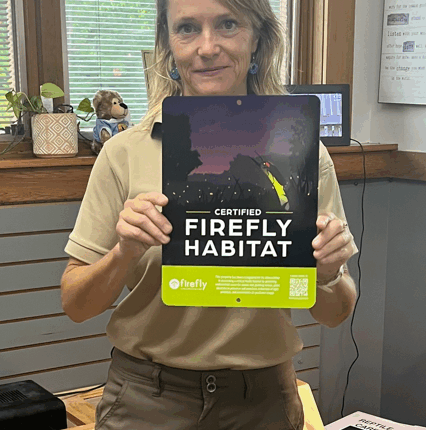Share this @internewscast.com
COLUMBUS, Ohio (WCMH) – Research suggests firefly populations are declining, prompting calls to create firefly habitats.
Erin Shaw, a naturalist with the Ohio Department of Natural Resources, has always been captivated by fireflies. Lately, however, she has noticed fewer of these enchanting insects, echoing a global trend. Anecdotal evidence, though lacking comprehensive studies, suggests a worldwide decline in firefly populations, as documented by Firefly Atlas, a North American conservation effort.

“This past year has been fairly favorable for fireflies in terms of weather and moisture,” Shaw told Nexstar’s WCMH. “Many people have observed them this year, but overall, their numbers are dropping.”
Motivated by the decreasing sightings, Shaw pursued a firefly habitat certification for Caesar Creek State Park in southwestern Ohio through the global nonprofit Firefly Conservation and Research.
To achieve certification, individuals must ensure their environment is ideal for fireflies, providing undisturbed areas for adults and larvae, promoting plant diversity, reducing artificial light, and minimizing pesticide use.
Initially, Shaw established a firefly habitat with a small garden near the Nature Center but soon realized that the majority of the park already served as a refuge, with over 70% meeting the nonprofit’s standards.
The $45 self-guided certification program offers a downloadable guide with a checklist for creating firefly-friendly environments and a “certified firefly habitat” sign, which helps raise awareness about the decline in firefly populations.
“I think a lot of parks could do this, you could get it for your backyard, you could get it for your church or your school or your business,” Shaw said. “It’s applicable to many different places.”
Anyone can create a certified firefly habitat by completing the program. Shaw said moist areas, such as those near creeks, ponds and other wetlands, would be ideal spots to create firefly habitats. She also noted lightning bugs enjoy trees, tall grass, rotten logs and leaf litter.
“It’s finding places where they should be and then just helping to protect that area for [the] future,” she said.
Fireflies face a variety of threats, including light pollution, defined as the brightening of the night sky by street lights and other artificial sources. Such lights can disrupt courtship among fireflies, which rely on their lanterns to find mates.
Habitat loss due to urban development and pesticide use is also impacting firefly populations. To help, Shaw said residents can turn off their porch lights before dusk throughout the summer, when fireflies are most active, and avoid using pesticides.
“Instead of spraying pesticide on our gardens, we could simply make a firefly habitat and invite the larvae to have a safe place to stay and then they will help take care of our pesky bugs,” Shaw said.
As larvae, fireflies benefit the environment by controlling populations of invertebrates such as slugs and snails, which can damage and kill plants if left unchecked by natural predators. As adults, they feed on pollen and nectar, benefiting a variety of flowering plants.
Fireflies are members of the beetle family, with scientists estimating there are about 2,000 firefly species worldwide, including nearly 200 in North America.













